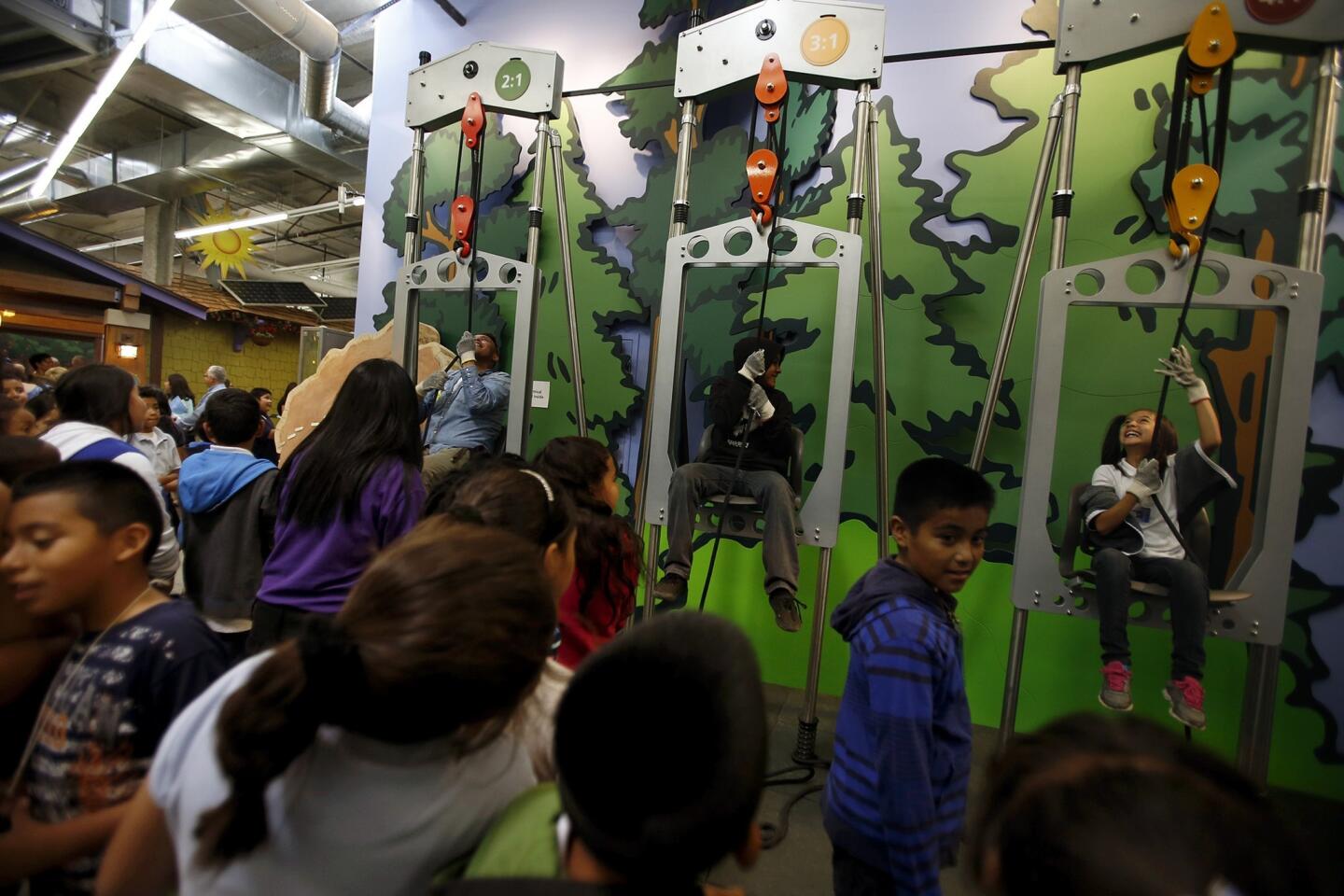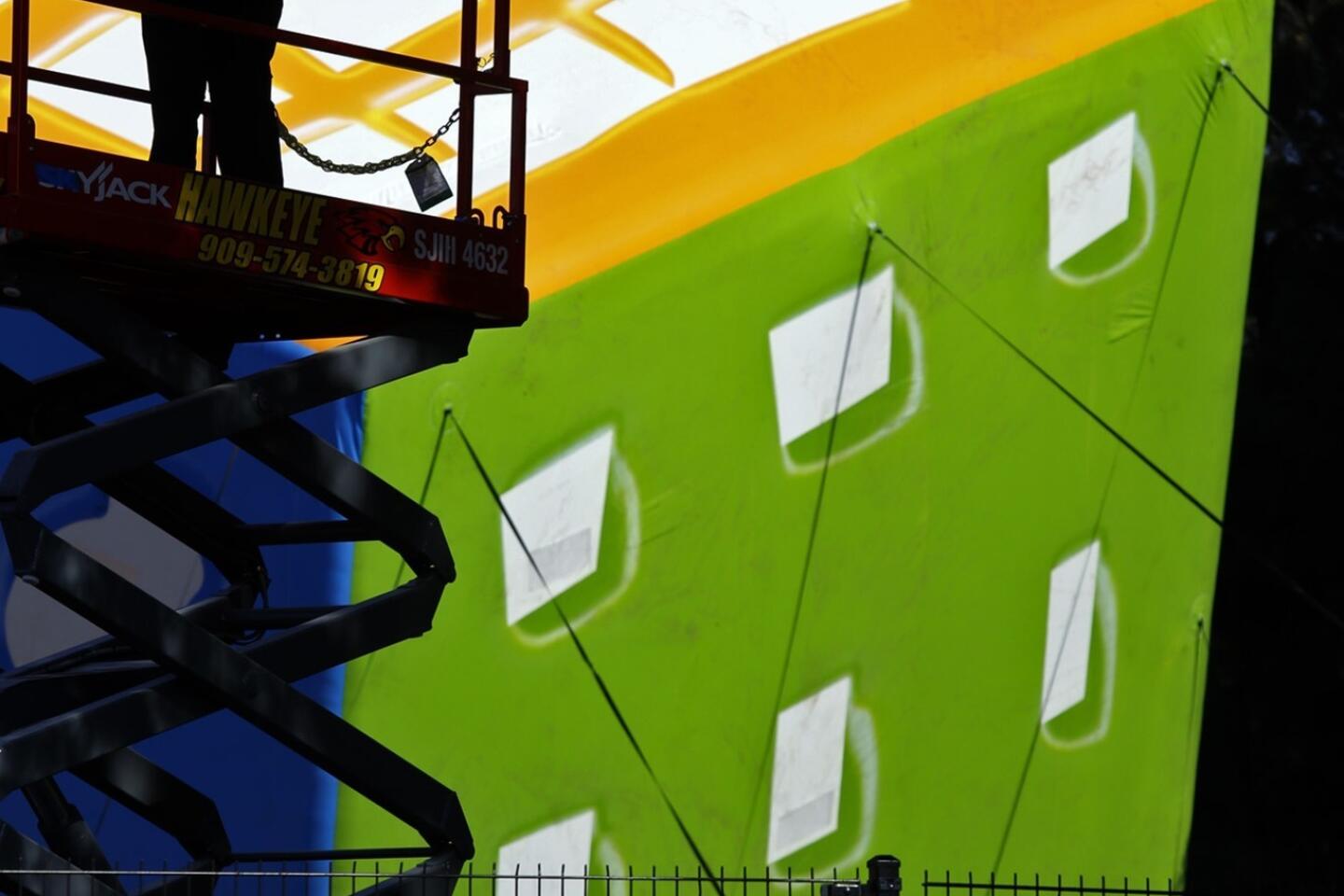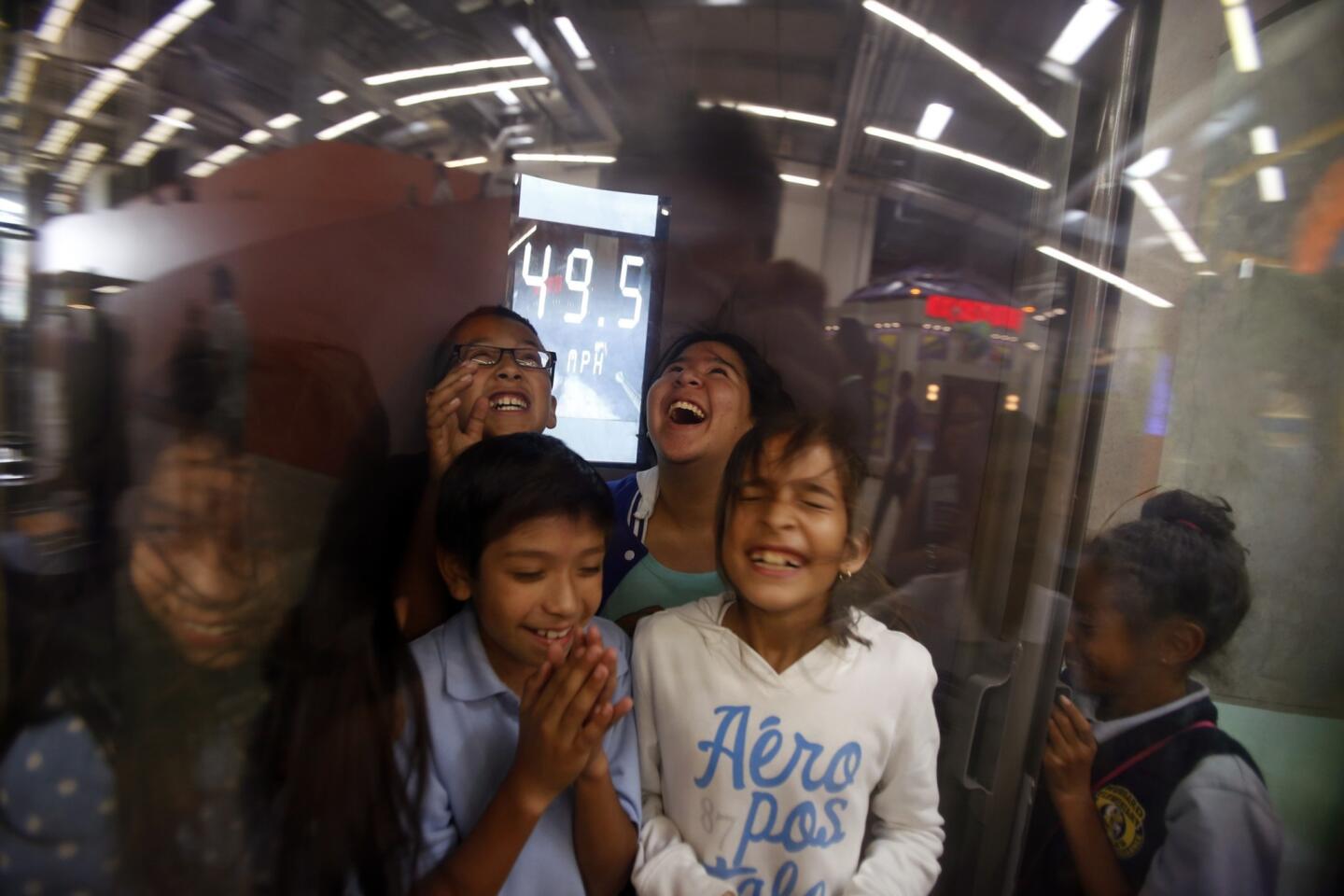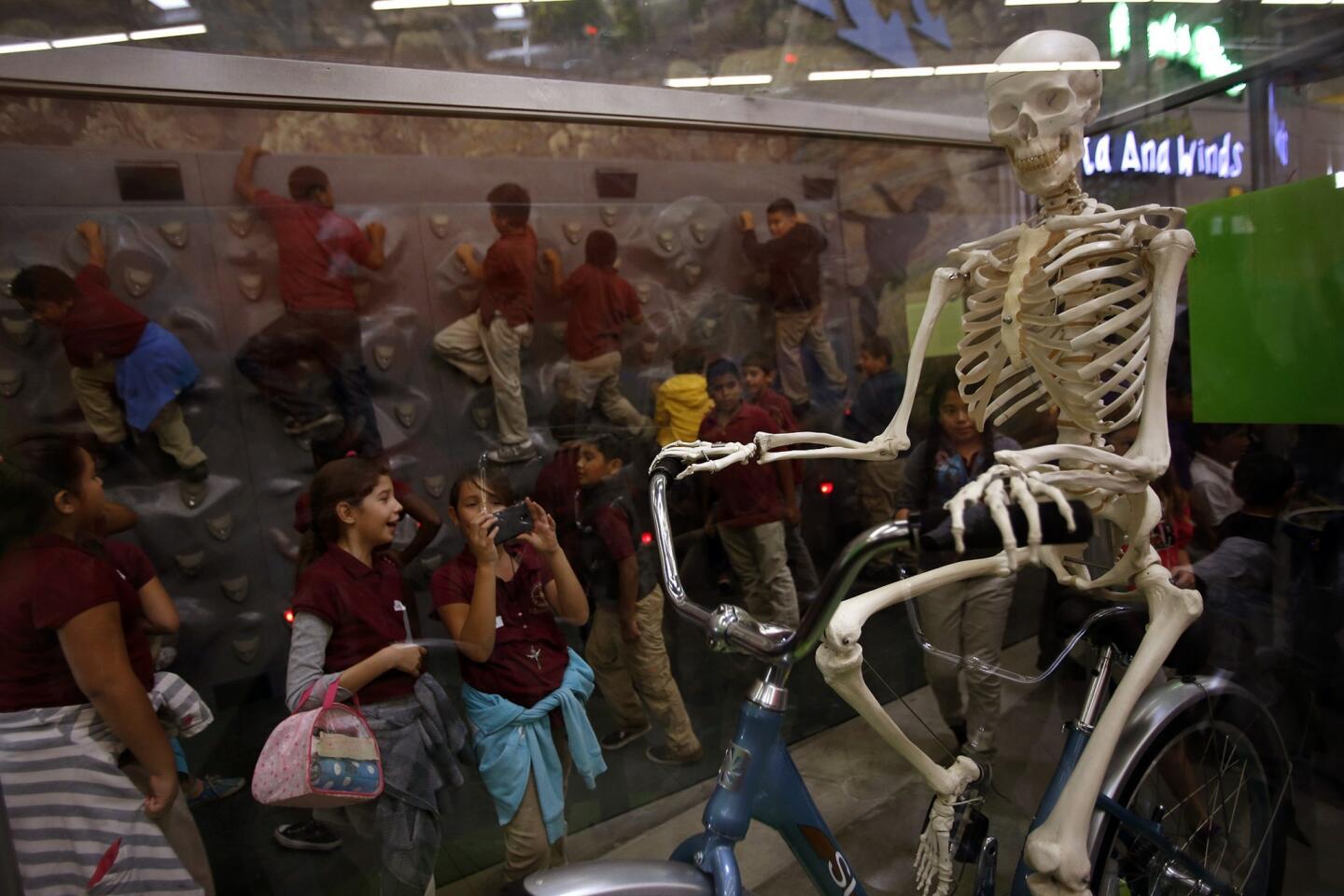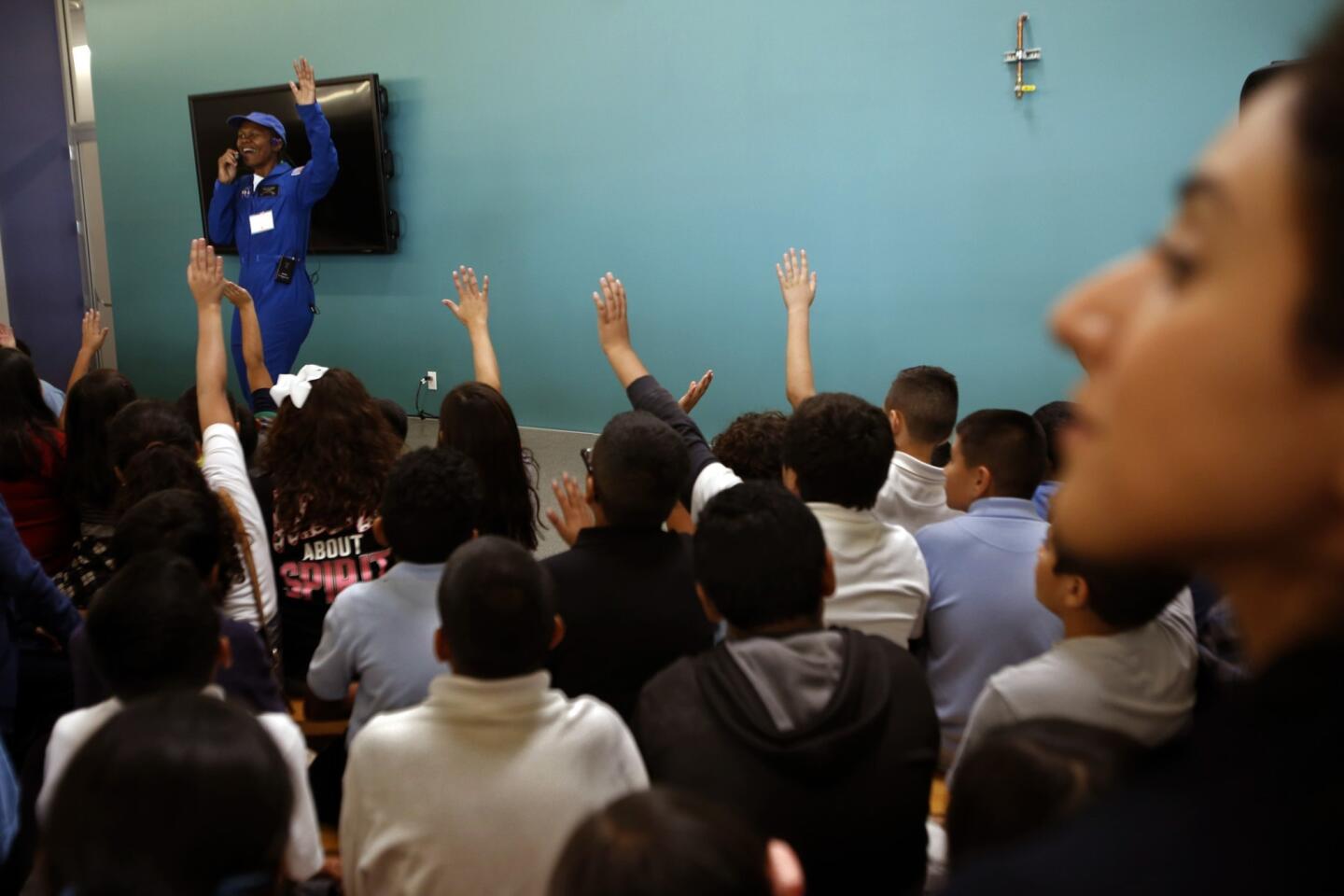San Fernando Valley’s Discovery Cube L.A. opens in once-vacant museum
- Share via
The empty children’s museum in Lake View Terrace was a $21.8-million civic embarrassment, built but never opened after its planned operator went bankrupt.
For residents of the San Fernando Valley, it became a symbol of unfilled promises, fueling the sense of some who felt they weren’t getting their fair share from City Hall.
So there was a shared sense of pride Thursday when Discovery Cube Los Angeles, a children’s science center and the first major museum in the Valley, finally opened its doors — breathing life into a building that sat vacant for seven years.
“You don’t know how many times this was almost scrapped,” Los Angeles City Council President Herb Wesson told the hundreds gathered for a grand opening ceremony. “You don’t know how many times this was called a white elephant, a boondoggle.”
The moment was particularly sweet for residents of the northeast Valley, a predominantly Latino, working-class area that has for decades complained about not getting its due in the far-flung city on issues such as municipal services and environmental problems.
Many of the city’s museums are located in downtown Los Angeles or in Westside neighborhoods. And state Sen. Alex Padilla (D-Pacoima) said that some have asked, “Why the Valley?” and questioned whether the museum’s location at the Hansen Dam Recreation Center — 20 miles north of downtown — was too far away for such a grand museum.
“Yes, there were opportunities in downtown,” Padilla said. “Yes, there were opportunities on the Westside. But this is an equal part of the city.”
The new science center, which has 71,000 square feet of indoor and outdoor space, will operate in tandem with the newly renamed Discovery Cube Orange County in Santa Ana (formerly known as the Discovery Science Center).
Discovery Cube L.A. is projected to attract 180,000 visitors its first year and create early 100 full- and part-time jobs, according to the Discovery Science Foundation, which does program development for the museums in Santa Ana and the Valley.
The city built the museum site in 2007, but it remained unused and empty after its now-defunct partner, the Children’s Museum of Los Angeles, failed to raise enough money to install exhibits and open it to the public.
The site, which is owned by the Army Corps of Engineers and leased to the city of Los Angeles, was offered to the Discovery Science Foundation for $1 a year for the next 32 years, according to museum officials. The museum is funded with federal, city and private money.
The first waves of children, on field trips with nearby schools, suggested the museum is likely to be a success. The children got a first look at the interactive displays, such as one that demonstrated the whirling effects of a tornado.
“It’s alive!” shouted one of the 10-year-olds who had never seen a twister in real life, pumping his arms in the air and running into the steam. “It’s alive!”
Two girls squeezed into a glass chamber where the Santa Ana winds were simulated, their hair flying around them as the wind got up to 78 mph.
“It was really cool,” said Beverly Escobar, 10, grinning as she patted her wind-blown ponytail down.
Pacoima resident Marleny Molina stood in the back of a large crowd, smiling as her daughter, part of a children’s chorus, sang a song about learning.
Molina said she used to drive her kids to a children’s museum in Pasadena, but having something so close would be a blessing. She and her daughter often walked together through the recreation center to check the progress of the new museum.
“My daughter said she wants to come every day,” Molina said.
Cynthia Lleremas, 10, peered through a telescope to see a model of the Scorpius constellation. Lleremas, a fifth-grader at North Hollywood’s Julie Korenstein Elementary School, gave the display a nod of approval.
“In my opinion, it’s incredible how these stars can make a form,” she said. “It’s like an ability to entertain us. When there’s nothing to do, I look up at the constellations.”
Lleremas loves the stars, she said. At night, she always tries to find the stars that form Orion’s Belt and the Little Dipper.
Before running off to join her classmates, Lleremas gave the new museum her review: “It’s awesome.”
Twitter: @haileybranson
More to Read
Sign up for Essential California
The most important California stories and recommendations in your inbox every morning.
You may occasionally receive promotional content from the Los Angeles Times.
